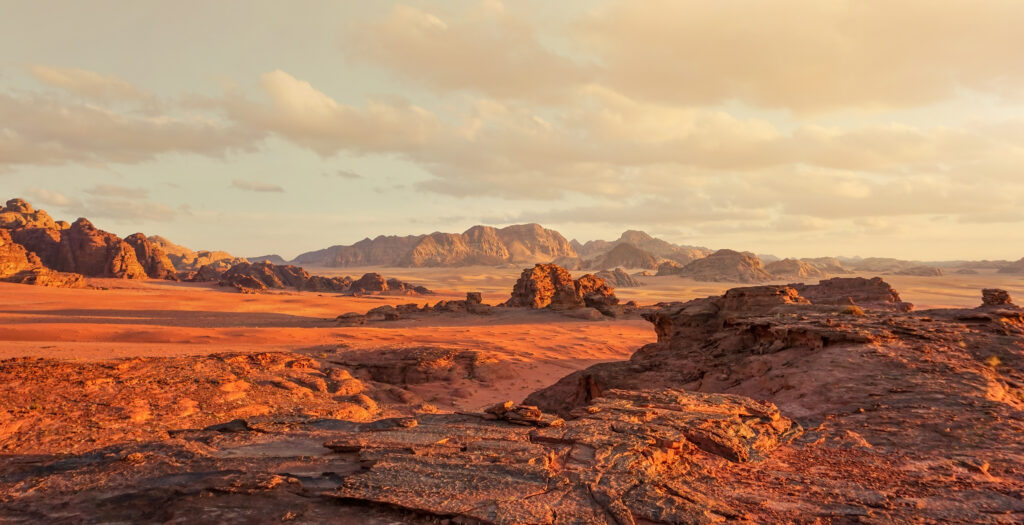Exploring Mars is a dream for many, but a new study warns of serious health risks due to the planet’s toxic dust. This dust could be far more dangerous for astronauts than scientists first thought. It can harm their lungs, cause long-term health problems, and complicate space missions.
Martian Dust: A Hidden Danger
From Earth, Mars looks calm and inviting. But up close, the Red Planet is far from friendly. A recent study has shown that the dust covering the surface of Mars is a major health concern. These fine, sticky particles could harm astronauts during their missions. The study published in GeoHealth emphasizes how the dust can reach deep into the lungs and even into the bloodstream.
Lunar missions during the Apollo program showed that dust can be more dangerous than expected. Astronauts working on the Moon experienced health issues like sore throats and eye irritation from the dust. Over time, scientists learned that dust can lead to chronic conditions. Mars dust is similar to Moon dust, but it may be even more dangerous.
What Is in Mars Dust?
Martian dust isn’t just annoying; it’s toxic. The dust contains substances like silica, gypsum, and metals. These materials can harm astronauts if inhaled over time. Silica can cause lung diseases like silicosis. Inhaled metals can also pose serious health risks.
Mars dust is very small—just 4% the width of a human hair. This makes it easy to breathe in or even get into the bloodstream. Once it enters the body, it can cause long-term damage to the lungs and other organs.
How Does Dust Affect Astronauts?
Mars missions could last years, and astronauts will not have a quick way to return to Earth. This makes the risk of exposure to harmful dust even more serious. Communication with Earth can be delayed by up to 40 minutes. This means astronauts could face health problems without immediate help from Earth.
In the study, researchers stress the importance of taking steps to protect astronauts from this dust. Without proper protection, dust exposure could cause serious health problems during long-term Mars missions. Some astronauts might even be unable to carry out their tasks or perform their duties due to illness.
Protective Measures for Astronauts
To keep astronauts safe, scientists are working on protective equipment that can stop the dust from harming them. These tools include space suits with self-cleaning abilities and advanced air filters that can remove the dust from the air inside spacecraft. Some technologies even use electrostatic repulsion to keep dust from sticking to equipment and spacesuits.
Without these protective measures, astronauts may face serious health risks. The study emphasizes that prevention is key. If astronauts are not properly protected from dust, they could suffer from lung diseases and other health problems. The right technology could make all the difference.
A Long-Term Problem for Mars Missions
Mars is a long way from Earth, and any mission there will require careful planning. The study shows that dust is one of the biggest risks to astronauts. Scientists and engineers must think about how to keep astronauts safe before they can land on Mars.
The good news is that space agencies like NASA are already planning ahead. They are designing better spacesuits and air filters to protect astronauts from the toxic dust. These efforts will be essential for ensuring the success of Mars missions.
Preparing for the Unknown
As we get closer to sending humans to Mars, it’s important to remember that space exploration is full of challenges. Mars may look calm, but the dust on its surface poses a serious threat to astronauts’ health. This new study sheds light on how dangerous Mars exploration could be if these health risks aren’t addressed.
Scientists are working hard to develop new technologies to keep astronauts safe from the harmful effects of Martian dust. These tools will be essential for any future Mars missions.
The Need for Advanced Protection
Exploring Mars may be one of the greatest achievements of humanity, but it comes with its own set of challenges. Dust, a small and seemingly harmless issue, could turn out to be one of the biggest obstacles for astronauts. To ensure safe missions to the Red Planet, scientists must develop advanced protective equipment that will keep astronauts safe from the dangers of Martian dust. As we prepare to send humans to Mars, it’s crucial that we learn from past experiences and take every precaution to protect those who venture into space.


